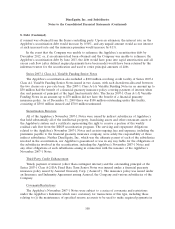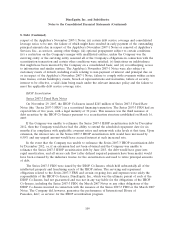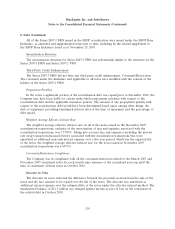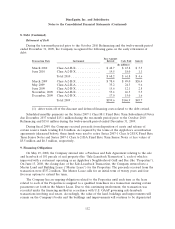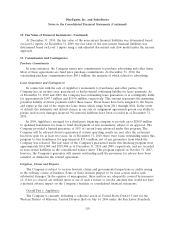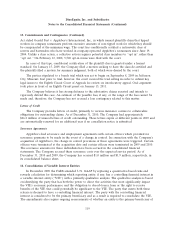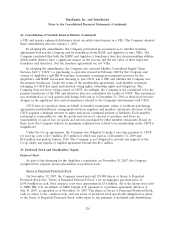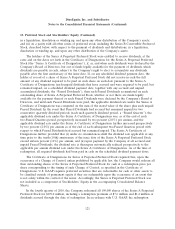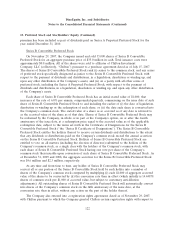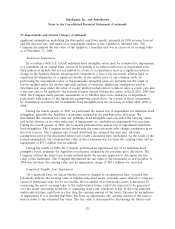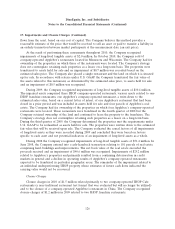IHOP 2010 Annual Report Download - page 132
Download and view the complete annual report
Please find page 132 of the 2010 IHOP annual report below. You can navigate through the pages in the report by either clicking on the pages listed below, or by using the keyword search tool below to find specific information within the annual report.DineEquity, Inc. and Subsidiaries
Notes to the Consolidated Financial Statements (Continued)
10. Leases (Continued)
The Company has noncancelable leases, expiring at various dates through 2032, which require
payment of contingent rents based upon a percentage of sales of the related restaurant as well as
property taxes, insurance and other charges. Subleases to franchisees of properties under such leases
are generally for the full term of the lease obligation at rents that include the Company’s obligations
for property taxes, insurance, contingent rents and other charges. Generally, the noncancelable leases
include renewal options. Contingent rent expense for all noncancelable leases for the years ended
December 31, 2010, 2009 and 2008 was $3.4 million, $3.9 million and $4.5 million, respectively.
Minimum rent expense for all noncancelable operating leases for the years ended December 31, 2010,
2009 and 2008 was $87.2 million, $86.6 million and $91.2 million, respectively.
11. Fair Value Measurements
U.S GAAP pertaining to fair value measurements defines fair value as the price that would be
received to sell an asset or paid to transfer a liability in an orderly transaction between market
participants at the measurement date (an exit price). U.S. GAAP establishes a three-tier fair value
hierarchy that prioritizes the inputs used in measuring fair value. These tiers include: Level 1, defined
as observable inputs such as quoted prices in active markets; Level 2, defined as inputs other than
quoted prices in active markets that are either directly or indirectly observable; and Level 3, defined as
unobservable inputs in which little or no market data exists; therefore requiring an entity to develop its
own assumptions.
The Company has two types of financial instruments which are required under U.S. GAAP to be
measured on a recurring basis at fair value—restricted assets related to Applebee’s captive insurance
subsidiary and certain loan guarantees (see Note 13). None of the Company’s non-financial assets or
non-financial liabilities is required to be measured at fair value on a recurring basis. The Company has
not elected to use fair value measurement, as provided under U.S. GAAP, for any assets or liabilities
for which fair value measurement is not presently required.
Restricted assets related to a captive insurance subsidiary are carried at fair value and consisted of
the following at December 31, 2010: $0.8 million of cash and certificates of deposit held in escrow,
$0.2 million in money market funds invested in United States government securities, $2.0 million in
mutual funds invested in auction-rate securities and one auction-rate security of $0.6 million. At
December 31, 2009 restricted assets related to a captive insurance subsidiary consisted of the following:
$0.8 million of cash and certificates of deposit held in escrow, $0.9 million in money market funds
invested in United States government securities, $2.0 million in mutual funds invested in auction-rate
securities and one auction-rate security of $0.6 million. The money market funds, the auction rate
securities and the mutual funds invested in auction-rate securities are considered available for sale.
116




